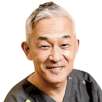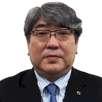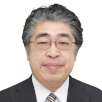The use of amalgam will likely cease in many countries over the next years—grounded in the Minamata Convention on Mercury, emanating from the spillage of mercury used in an industrial process in the city of Minamata in Japan and a series of widespread health effects due to subsequent mercury uptake. The vast majority of nations worldwide have signed the Minamata treaty, binding the signees to reduce and eventually stop the use of mercury in any industrial process. In that sense, dentistry is an outlier; only for dentistry did the treaty not mandate a complete phase-out of the material but a phase-down. Signing nations promised to undertake measures to reduce the use of dental amalgam, for example via the reinforcement of prevention or the development and adoption of alternative restorative strategies. In many countries in the world, including all countries of the EU, policymakers have indeed decided to overachieve this promise and phase out the use of dental amalgam completely. For some groups, such as pregnant or lactating women, this phase-out has already become reality. Within this reality, dentists are now faced with an important question: what alternative material should they use?
Restorative options in the post-amalgam era
In the last 60 years, a range of amalgam alternative materials have been introduced. Broadly, they fall into three categories:
- resin-based composite materials, placed in increments to compensate for polymerisation shrinkage and to allow safe polymerisation;
- glass-based materials, namely glass ionomers and glass hybrids;
- materials combining the properties of both material classes—the terminology in this category is not consistent and the clinical evidence often limited.
Resin composites
Resin composites have a long tradition of being used as an alternative to amalgam, in particular for posterior load-bearing restorations extending into the proximal surface. Micro- and nano-hybrid resin composites have shown excellent physical properties, such as high resistance against abrasion and erosion, high flexural strength, good polishability and excellent aesthetics. Moreover, these materials can be placed adhesively and therefore do not rely on macro-retentive cavity preparation, allowing for minimally invasive dentistry. Notably, the placement of resin composites comes with a number of prerequisites, like strict moisture control, stepwise preparation and conditioning of the cavities, such as involving acid etching and adhesive placement. In recent years, the trend towards simplifying these application steps has been a focus of manufacturers, for example by combining the etching and the adhesive steps or by reducing the need for incremental placement by using bulk fill composites instead.
Nevertheless, the placement of resin composites—in equigingival or subgingival situations in particular—is technically demanding. Moreover, the material itself is relatively costly compared with dental amalgam. Hence, resin composites can safely be regarded as a contemporary amalgam alternative, but nevertheless do not check all the boxes.
Glass ionomers and glass hybrids
For several decades, glass ionomers have not been considered a full-fledged amalgam alternative, mainly because of their limited stability against abrasion and erosion and their low flexural strength, which results in limited longevity in occlusal-proximal posterior cavities. More recent generations of this material glass have been developed to specifically address the main weaknesses. A more advanced category of glass-based materials, called glass hybrids, claims to have overcome most limitations regarding abrasion and erosion stability and to have significantly improved flexural strength. This has been achieved by alterations in the chemical composition of the material—mainly the introduction of an additional, smaller and highly reactive glass particle and longer acrylic acid chains. Moreover, the introduction of an additional coating step for the occlusal or other accessible surfaces, involving a nano-resin material being placed on to the rougher glass surface, protects the porous glass body against acid and abrasion. This coating has also been found to significantly improve the aesthetics of this formerly poorly polishable material. When the coat wears off, the glass hybrid undergoes a unique second maturation, substantially increasing the restoration’s hardness.1
In laboratory studies, it was confirmed that indeed the glass hybrids have significantly superior properties compared with their predecessors while retaining the advantages of this material class, namely the option of bulk placement, the ease of placement and high bioactivity—especially the known release of fluoride. However, laboratory studies are not necessarily perfect surrogates for clinical behaviour. Only clinical studies can demonstrate the true effects of any material alterations and the potential suitability of a restorative material as an amalgam alternative.
Glass hybrids: Clinical data as hard currency
Like with most scientific advances, the development of the glass hybrids was not a revolution but an evolution. A number of studies—some even practice-based—investigated the direct predecessors of glass hybrids and confirmed the advances of this material class over the last 15 years, refuting the notion of glass-based materials being merely a temporary material.2–4 The current generation of glass hybrids has been assessed in several studies that are presented in more detail in the subsequent paragraphs. Reassuringly, these studies were not all associated with manufacturers and were conducted by a range of groups from all over the world. Moreover, they dealt with different clinical indications and employed robust clinical designs, such as randomised control trials, to compare the glass hybrid material against an accepted standard of care like a resin composite. Two main application fields have been explored—cervical and posterior as well as load-bearing lesions.
Cervical lesions (Figs. 1–3)
The cervical placement of glass ionomers, especially resin-modified glass ionomers, has a long tradition and is backed by a wealth of clinical studies demonstrating the usefulness of this material for this purpose. Resin-modified glass ionomers have consistently outperformed alternative materials when it comes to survival and success of cervical restorations.5 For glass hybrids, two randomised trials comparing this material against resin composites were identified.
The first study included a small sample of 25 patients with non-carious cervical lesions and bruxism.6 In these overall rather young patients, 148 lesions were randomly restored, indicating a massive clustering of the lesions per patient, with either a glass hybrid (EQUIA Forte, GC) or a resin composite (ceram.x one universal, Dentsply Sirona). After six, 12 and 24 months of follow-up, the restorations were re-evaluated using the modified United States Public Health Service (USPHS) criteria. When assessing the 126 remaining restorations in 22 patients at the 24-month recall, it was apparent that both materials had performed similarly. Only for marginal adaptation was a significant difference found, the glass hybrid showing slightly reduced adaptation. Secondary caries was not observed on any of the restorations.



 Austria / Österreich
Austria / Österreich
 Bosnia and Herzegovina / Босна и Херцеговина
Bosnia and Herzegovina / Босна и Херцеговина
 Bulgaria / България
Bulgaria / България
 Croatia / Hrvatska
Croatia / Hrvatska
 Czech Republic & Slovakia / Česká republika & Slovensko
Czech Republic & Slovakia / Česká republika & Slovensko
 France / France
France / France
 Germany / Deutschland
Germany / Deutschland
 Greece / ΕΛΛΑΔΑ
Greece / ΕΛΛΑΔΑ
 Italy / Italia
Italy / Italia
 Netherlands / Nederland
Netherlands / Nederland
 Nordic / Nordic
Nordic / Nordic
 Poland / Polska
Poland / Polska
 Portugal / Portugal
Portugal / Portugal
 Romania & Moldova / România & Moldova
Romania & Moldova / România & Moldova
 Slovenia / Slovenija
Slovenia / Slovenija
 Serbia & Montenegro / Србија и Црна Гора
Serbia & Montenegro / Србија и Црна Гора
 Spain / España
Spain / España
 Switzerland / Schweiz
Switzerland / Schweiz
 Turkey / Türkiye
Turkey / Türkiye
 UK & Ireland / UK & Ireland
UK & Ireland / UK & Ireland
 Brazil / Brasil
Brazil / Brasil
 Canada / Canada
Canada / Canada
 Latin America / Latinoamérica
Latin America / Latinoamérica
 USA / USA
USA / USA
 China / 中国
China / 中国
 India / भारत गणराज्य
India / भारत गणराज्य
 Japan / 日本
Japan / 日本
 Pakistan / Pākistān
Pakistan / Pākistān
 Vietnam / Việt Nam
Vietnam / Việt Nam
 ASEAN / ASEAN
ASEAN / ASEAN
 Israel / מְדִינַת יִשְׂרָאֵל
Israel / מְדִינַת יִשְׂרָאֵל
 Algeria, Morocco & Tunisia / الجزائر والمغرب وتونس
Algeria, Morocco & Tunisia / الجزائر والمغرب وتونس
 Middle East / Middle East
Middle East / Middle East
:sharpen(level=0):output(format=jpeg)/up/dt/2024/07/Study-evaluates-primary-personality-types-among-dental-students.jpg)
:sharpen(level=0):output(format=jpeg)/up/dt/2024/07/Shutterstock_2330040761.jpg)
:sharpen(level=0):output(format=jpeg)/up/dt/2024/07/file-7.jpg)
:sharpen(level=0):output(format=jpeg)/up/dt/2024/07/Our-commitment-to-digital-dentistry-is-a-cornerstone-of-our-strategy.jpg)
:sharpen(level=0):output(format=jpeg)/up/dt/2024/07/Shutterstock_1051488260.jpg)








:sharpen(level=0):output(format=png)/up/dt/2024/07/polorto-logo-edit.png)
:sharpen(level=0):output(format=png)/up/dt/2023/11/Patent%E2%84%A2-Implants-_-Zircon-Medical.png)
:sharpen(level=0):output(format=png)/up/dt/2011/11/ITI-LOGO.png)
:sharpen(level=0):output(format=png)/up/dt/2023/03/ACTEON_NEW-logo_03-2024.png)
:sharpen(level=0):output(format=png)/up/dt/2013/04/Dentsply-Sirona.png)
:sharpen(level=0):output(format=png)/up/dt/2022/10/DMP-logo-2020_end.png)
:sharpen(level=0):output(format=jpeg)/up/dt/2023/01/Amalgam-Gone-for-good_Falk-Schwendicke_GC_01.jpg)
:sharpen(level=0):output(format=png)/up/dt/2021/02/logo-gc-int.png)
:sharpen(level=0):output(format=jpeg)/up/dt/2021/03/Schwendicke_Falk-300x300.jpg)
:sharpen(level=0):output(format=jpeg)/up/dt/2023/01/Amalgam-Gone-for-good_Falk-Schwendicke_GC_02.jpg)
:sharpen(level=0):output(format=jpeg)/up/dt/2023/01/Amalgam-Gone-for-good_Falk-Schwendicke_GC_03.jpg)
:sharpen(level=0):output(format=jpeg)/up/dt/2023/01/Amalgam-Gone-for-good_Falk-Schwendicke_GC_04.jpg)
:sharpen(level=0):output(format=jpeg)/up/dt/2023/01/Amalgam-Gone-for-good_Falk-Schwendicke_GC_05.jpg)
:sharpen(level=0):output(format=jpeg)/up/dt/2023/01/Amalgam-Gone-for-good_Falk-Schwendicke_GC_06.jpg)
:sharpen(level=0):output(format=jpeg)/up/dt/2023/01/Amalgam-Gone-for-good_Falk-Schwendicke_GC_07.jpg)
:sharpen(level=0):output(format=jpeg)/up/dt/2023/01/Amalgam-Gone-for-good_Falk-Schwendicke_GC_08.jpg)
:sharpen(level=0):output(format=jpeg)/up/dt/2023/01/Amalgam-Gone-for-good_Falk-Schwendicke_GC_09.jpg)
:sharpen(level=0):output(format=jpeg)/up/dt/2022/08/GCs-simplified-workflow-efficiency-for-one-appointment-dentistry.jpg)
:sharpen(level=0):output(format=jpeg)/up/dt/2021/06/g-cem-one.jpg)
:sharpen(level=0):output(format=jpeg)/up/dt/2023/10/Study-confirms-EQUIA-Forte-is-suitable-for-medium-to-large-Class-II-restorations.jpg)
:sharpen(level=0):output(format=jpeg)/up/dt/2021/05/The-ONE-symposium-starts-tomorrow_GC.jpg)
:sharpen(level=0):output(format=jpeg)/up/dt/2021/10/Big-turnout-for-CEREC-Day-2021_2.jpg)
:sharpen(level=0):output(format=jpeg)/up/dt/2021/10/GC-readies-itself-for-fifth-International-Dental-Symposium_1-min.jpg)
:sharpen(level=0):output(format=jpeg)/up/dt/2021/06/Cost-effectiveness-of-glass-hybrids-as-restorative-alternative-proved-for-cervical-lesions.jpg)
:sharpen(level=0):output(format=jpeg)/up/dt/2023/07/001-1.jpg)
:sharpen(level=0):output(format=jpeg)/up/dt/2021/02/GC-centenary.jpg)






















:sharpen(level=0):output(format=jpeg)/wp-content/themes/dt/images/3dprinting-banner.jpg)
:sharpen(level=0):output(format=jpeg)/wp-content/themes/dt/images/aligners-banner.jpg)
:sharpen(level=0):output(format=jpeg)/wp-content/themes/dt/images/covid-banner.jpg)
:sharpen(level=0):output(format=jpeg)/wp-content/themes/dt/images/roots-banner-2024.jpg)
To post a reply please login or register